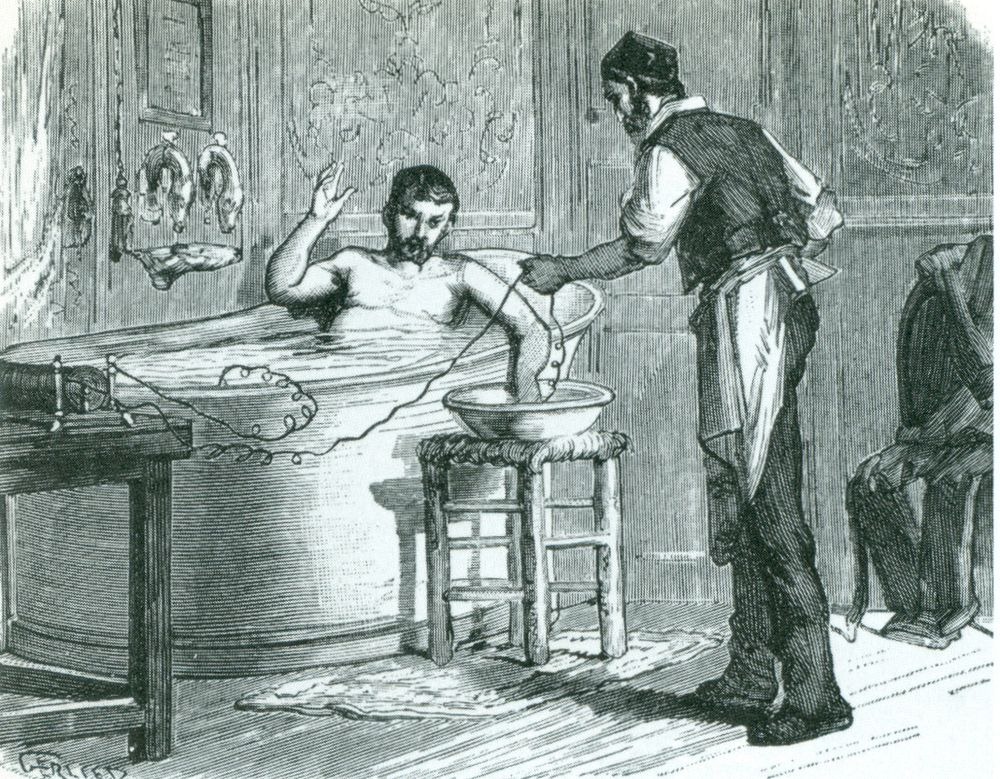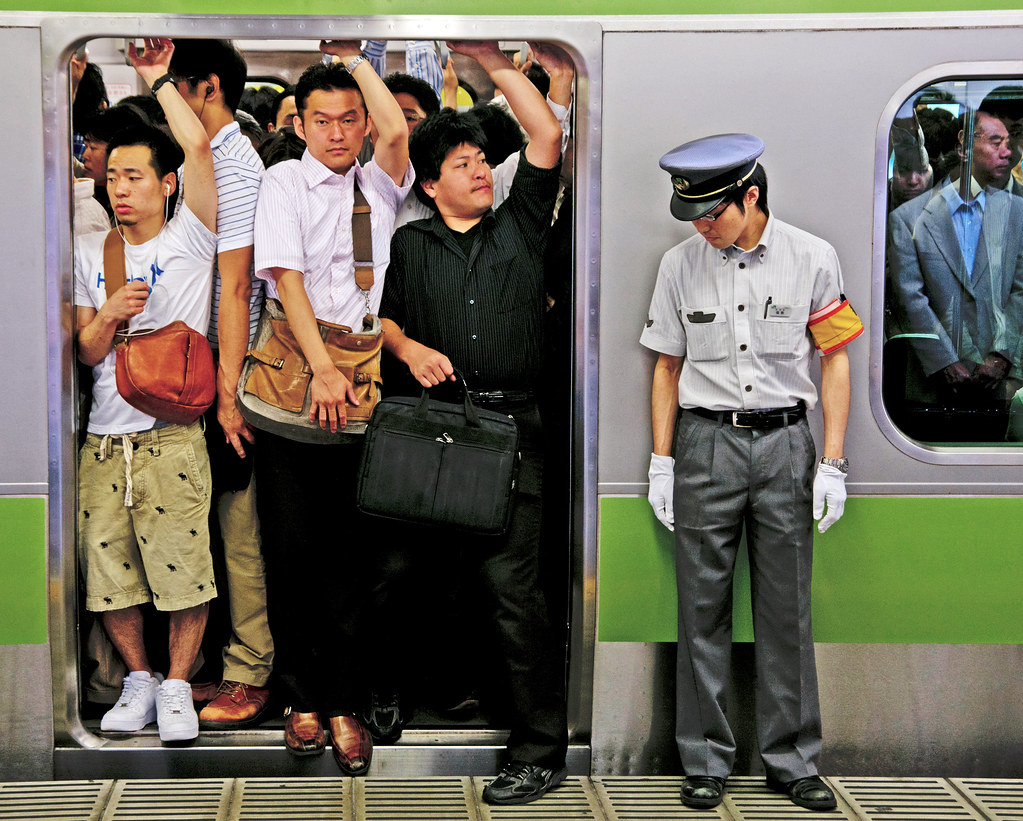Denki Buro: The Electric Baths of Japan
baths buro: denki electric japan WeirdMany public bath houses in Japan have special pools lined with live metal electrodes for those peculiar bathers who would rather have actual electricity surging through their bodies than have coffees like normal folks. These baths are known as denki buro or “electric baths” and they are found throughout Japan.
Whatever you had learned about the deadly combination of electricity and water at primary school, you can experience first hand at a denki buro. The bather sits in a small pool between two plates of opposite electric polarity and lets a low-level electric current to pass through their body. The current induces mild shock causing the muscles to contract and develop a tingling sensation which some people find relaxing while others find it painful. Electric baths are said to provide relief from rheumatism and spondylitis, but it is also rumored, especially by the younger generation, that denki buro reduces sperm count.

French electric bath, circa late 1870s. Photo credit: engineeringhistory.tumblr.com
The history of deniki buro is difficult to trace, but they've clearly been around since at least 1928 when a story called Denkiburo no Kaishi Jiken (“The Case of the Suspicious Death in the Electricity Bath”) was published. Electrotherapy itself has existed since the 18th century when it was first used at a London hospital for unknown therapeutic purposes.
During the 1940s, the U.S. War Department gave electrotherapy to wounded soldiers to retard and prevent atrophy as well as to restore muscle mass and strength. Electrotherapy was also used with positive results in the treatment of cancer. In 1985, the journal Cancer Research published a remarkable study where researchers reported 98% shrinkage of tumor in animal subjects when treated with electrotherapy for only five hours over five days.
Although its effectiveness has not been conclusively proved, electrotherapy is often used as alternative treatment for back pain, muscle pain, headaches and migraines, arthritis, disorders of the nervous system, neuromuscular dysfunction and a host of other conditions.
According to the popular health information portal WebMD, electric current may cause people to experience less pain because “the electricity from the electrodes stimulates the nerves in an affected area and sends signals to the brain that block or "scramble" normal pain signals.” According to another theory, electrical stimulation of the nerves helps the body to produce natural painkillers called endorphins, which may block the perception of pain.
As always, it’s always advisable to consult your physician before you tryout new therapies especially those that involve electricity. And stay clear of denki buro if you’ve got a pacemaker installed or have a heart condition.

An electric bath. Photo credit: hinodeyu-osaka.com

A modern galvanic bath that you can use at home. Photo credit: www.sanatoria-klimkovice.com
Sources: Japan Times / Japan Visitor / Wikipedia
Subscribe to our Newsletter and get articles like this delieverd straight to your inbox
Whatever you had learned about the deadly combination of electricity and water at primary school, you can experience first hand at a denki buro. The bather sits in a small pool between two plates of opposite electric polarity and lets a low-level electric current to pass through their body. The current induces mild shock causing the muscles to contract and develop a tingling sensation which some people find relaxing while others find it painful. Electric baths are said to provide relief from rheumatism and spondylitis, but it is also rumored, especially by the younger generation, that denki buro reduces sperm count.

French electric bath, circa late 1870s. Photo credit: engineeringhistory.tumblr.com
The history of deniki buro is difficult to trace, but they've clearly been around since at least 1928 when a story called Denkiburo no Kaishi Jiken (“The Case of the Suspicious Death in the Electricity Bath”) was published. Electrotherapy itself has existed since the 18th century when it was first used at a London hospital for unknown therapeutic purposes.
During the 1940s, the U.S. War Department gave electrotherapy to wounded soldiers to retard and prevent atrophy as well as to restore muscle mass and strength. Electrotherapy was also used with positive results in the treatment of cancer. In 1985, the journal Cancer Research published a remarkable study where researchers reported 98% shrinkage of tumor in animal subjects when treated with electrotherapy for only five hours over five days.
Although its effectiveness has not been conclusively proved, electrotherapy is often used as alternative treatment for back pain, muscle pain, headaches and migraines, arthritis, disorders of the nervous system, neuromuscular dysfunction and a host of other conditions.
According to the popular health information portal WebMD, electric current may cause people to experience less pain because “the electricity from the electrodes stimulates the nerves in an affected area and sends signals to the brain that block or "scramble" normal pain signals.” According to another theory, electrical stimulation of the nerves helps the body to produce natural painkillers called endorphins, which may block the perception of pain.
As always, it’s always advisable to consult your physician before you tryout new therapies especially those that involve electricity. And stay clear of denki buro if you’ve got a pacemaker installed or have a heart condition.

An electric bath. Photo credit: hinodeyu-osaka.com

A modern galvanic bath that you can use at home. Photo credit: www.sanatoria-klimkovice.com
Sources: Japan Times / Japan Visitor / Wikipedia
Subscribe to our Newsletter and get articles like this delieverd straight to your inbox



















